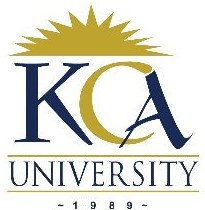
UNIVERSITY EXAMINATIONS: 2012/2013
EXAMINATION FOR THE BACHELOR OF SCIENCE IN
INFORMATION TECHNOLOGY
BIT 3107 WIRELESS NETWORKS TECHNOLOGIES
DATE: AUGUST, 2013 TIME: 2 HOURS
INSTRUCTIONS: Answer Question ONE and any other TWO Questions
QUESTION ONE
a) Describe briefly the three standard methods used to connect your computer to
GPRS mobile phone. (3 Marks)
b) (i) Describe briefly the Bluetooth technology. (3 Marks)
(ii) State any five prevalent applications of Bluetooth. (5 Marks)
c) Identify THREE significant strengths that wireless communications systems have
over their wired counterparts. (3 Marks)
d) PCM (Pulse Code Modulation) is the process in which a signal is sampled, and
the magnitude of the each sample with respect to a fixed reference is quantized
and converted by coding to a digital signal.
(i) Define sampling, quantization and encoding. (3 Marks)
(ii) State Nyquist Sampling Theorem (2 Marks)
(iii) Voice has frequency ranging from (approximately) 0 to 4000 Hz. To
reconstruct the signal when digitized, at what rate should samples be
taken? (1 Mark)
e) Define the following terminologies as used in WLANs
(i) Beacons (1 Mark)
(ii) Probes (1 Mark)
(iii) Authentication (1 Mark)
(iv) Association (1 Mark)
f) Differentiate between the following:
(i) Serial transmission and parallel transmission (2 Marks)
(ii) Synchronous transmission and asynchronous transmission (2 Marks)
(iii) Protocols and handshaking (2 Marks)
QUESTION TWO
a) Compare and contrast Bluetooth and Wi-Fi in networking. (4 Marks)
b) Describe briefly the following Bluetooth usage models:
(i) Headset (1 Mark)
(ii) Three-in-one phone (1 Mark)
(iii) LAN Access (1 Mark)
iv) Internet Bridge (1 Mark)
c) (i) Explain briefly the Bluetooth packet fields. (3 Marks)
(ii) State the three types of access codes used by Bluetooth. (3 Marks)
d) Distinguish between “piconet” and “scatternet” as used in Bluetooth technology.
(4 Marks)
e) Differentiate between Synchronous Connection Oriented (SCO) and
Asynchronous Connectionless (ACL) as used in Bluetooth. (2 Marks)
QUESTION THREE
a) The 802.11 standard states that each conformant wireless LAN must provide nine
services. These services are divided into two categories: five distribution services
and four station services. The distribution services relate to managing ce11
membership and interacting with stations outside the cell. In contrast, the station
services relate to activity within a single cell and deal with station mobility as
they enter and leave cells, attaching themselves to and detach themselves from
base stations.
(i) Describe any three of the five distribution services. (6 Marks)
(ii) Describe any two of the four station services (4 Marks)
b) Describe three major factors that influence radio frequency transmissions.
(3 Marks)
c) Describe in detail the following:
(i) IEEE 802.11b standard (4 Marks)
(ii) IEEE 802.11a standard (3 Marks)
QUESTION FOUR
a) With the aid of relevant diagrams, describe Very Small Aperture Terminals (and
satellite) communications. (8 Marks)
b) Define the following terminologies in relation to satellite communications:
(i) Earth Stations (1 Mark)
(ii) Uplink (1 Mark)
(iii) Downlink (1 Mark)
(iv) Transponder (1 Mark)
(v) Elevation angle (1 Mark)
c) (i) Differentiate between Fixed-assignment multiple access (FAMA) and
Demand-assignment multiple access (DAMA). (2 Marks)
(ii) Describe a typical GEO satellite frequency allocation. (2 Marks)
d) State three factors which limit the number of subchannels provided within a
satellite channel via FDMA. (3 Marks)
QUESTION FIVE
a) “Multiple access” is a phrase commonly used with communication systems.
(i) Define the term “Multiple Access”. (1 Mark)
(ii) Identify the key differences between the following types of multiple
access: FDMA; TDMA; CDMA. (3 Marks)
b) With the aid of simple diagrams, sketch and show the minimum distance between
the centers of the cells that use the same frequency in the following cases:
(i) frequency re-use for 4-cell re-use pattern (4 Marks)
(ii) frequency re-use for 7-cell re-use pattern (4 Marks)
c) With the aid of a relevant diagram, describe the GSM Architecture. (8 Marks)